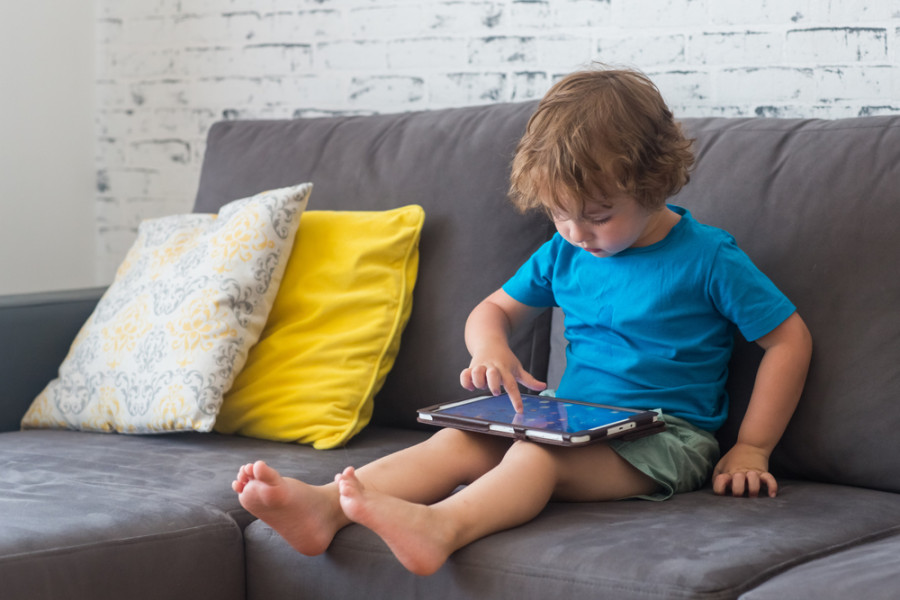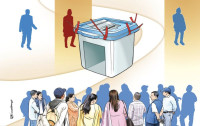Columns
A generation at risk
We’re losing our children to digital brain rot, and they’re losing more than their attention spans.
Pravina Thapa
There was a time when one of the world’s greatest civilisations, China, lost an entire generation to a slow, silent poison: opium. It numbed pain, dulled ambition and emptied futures. Young Chinese people who might have become poets, scientists, or leaders spent their days staring into the smoke. By the time the nation realised the damage, it was too late.
Today, as I walk through school corridors or sit with concerned parents, I fear we are on a similarly dangerous path—only now, the poison glows in the palms of our children’s hands. It’s more innocuously called a handheld device (phones, tablets, etc.) We see its impact every day. Children can barely sit through a conversation without reaching for a screen. Playgrounds are quieter. Curiosity is replaced with scrolling. Family dinners are silent, with our eyes fixed on glowing rectangles. Even our toddlers have not been spared. They throw tantrums—not for toys—but, increasingly, for tablets.
Sadly, we’ve come to accept all this as normal. In his book The Anxious Generation, social psychologist Jonathan Haidt exposes a troubling link between smartphones and the collapse of adolescent mental health. He calls it the “great rewiring of childhood”, a shift that began in the early 2010s, when smartphones and tablets became widespread. Since then, studies have shown that rates of anxiety, depression and self-harm among teenagers have risen by somewhere between 75 percent to nearly 200 percent in countries like the United States, Canada, the UK, Australia and New Zealand. These numbers aren’t just colourless statistics. They represent real children feeling numb, irritable and detached.
Today, we routinely hear of young people worldwide facing panic attacks, emotional shutdowns and struggling to manage daily stress. Once filled with laughter and play, childhood now is increasingly marked by restlessness, mood swings and unhappiness. This is no coincidence. It is a crisis born when screens replace swings, conversations give way to clicks, and the steady rhythm of real life is overtaken by digital noise. Children’s brains are not wired for the level of stimulation they now face. Every swipe, like, or click triggers dopamine, the brain chemical tied to reward. Dopamine spikes not just when we get a reward, but when we anticipate it. That’s why screens are so addictive. The endless scrolling, the wait for the next video or like keep the brain hooked.
Online games are a prime culprit, for example. Fast-paced, visually intense and endlessly rewarding, these games are designed to capture attention. Each level-up, upgrade, or surprise reward triggers dopamine surges. Many children spend hours in this hyper-stimulated state, then “crash”, feeling bored, irritable, or emotionally flat.
Today, we’re not just raising distracted kids. We’re raising children whose brains are being rewired by for-profit companies for distraction. Short videos, constant notifications and rapid gaming loops train young minds to expect instant rewards and novelty. This explains why many children struggle to focus in class, finish tasks, or stay motivated without external rewards. If there is a worst time to flood the brain with artificial dopamine, it is during adolescence. This is when the prefrontal cortex—the brain region responsible for decision-making, impulse control, empathy and planning—is still developing, often not maturing until the mid-20s.
In other words, teenagers today are engaging with technology that demands adult-level discipline before their brains are ready for adult decisions. And we wonder why they seem impulsive, distracted, or emotionally unstable. This isn’t bad behaviour. It’s a developmental mismatch with effects far beyond grades, impacting relationships, identity and lifelong mental health.
Screen time isn’t just a distraction. It can cause lasting harm. Children who spend hours on fast-paced content, mindless scrolling, or endless gaming aren’t just losing time: They are apparently losing brain matter. Though “digital brain rot” is not a medical term yet, it does describe a real issue. Excessive screen use is linked to reduced brain matter in areas vital for memory, emotional control and decision-making. These skills are crucial for focus, problem-solving and learning.
When the brain craves constant novelty, deep thinking becomes difficult. Reading feels boring. Homework is overwhelming. Focus fades. This isn’t laziness. It’s the neurological cost of over-stimulation. Even educational apps can become distractions. A child opening a device for homework may get pulled away by pings and notifications, which leads to multitasking without mastery and quick access without deep understanding. Many parents keep children indoors to protect them from physical dangers, away from unsupervised streets or strangers. But are they safe inside our homes? While their bodies stay indoors, their minds roam freely through a vast digital world that’s addictive, overwhelming and often dangerous. Behind most videos, games, or chats, children face challenges they are not ready to handle.
Cyber-bullying is no longer just occasional teasing. It’s constant, anonymous and cruel. Children are often humiliated, excluded and shamed in spaces where adults cannot hear their cries. Some suffer anxiety or withdrawal, others self-harm or worse. Then there are predators hiding behind fake profiles seeking vulnerable children in chats, games, or social media. Grooming—the process of gaining a child’s trust—once took months or years; now it can start with a single click, and accelerate from there. Even when children aren’t directly targeted, the platforms they use are.
This issue is not just about parenting. It’s about protecting the future of our children and society. Experts—neuroscientists, psychologists, educators and doctors—agree that how children use screens today is unsustainable. The costs are visible. Countries like the UK, France and the US have responded with clear policies. Schools have banned smartphone use during class. Governments have set screen time guidelines. And social media companies face pressure in these countries to make their platforms safer. They recognise that an entire generation’s well-being is at stake.
Here in Nepal, awareness is just beginning. As an educator, I am working with parents to implement a home gadget use policy. It’s one that respects family choices and encourages healthier routines outside-school hours. I believe schools can take the lead in protecting children’s mental health in our fast-changing world. Nepal cannot wait until the damage is irreversible. Our educators, policymakers, parents and tech companies must come together to build boundaries, nurture resilience and protect what is most precious: Our children’s minds and their future.




 5.46°C Kathmandu
5.46°C Kathmandu















